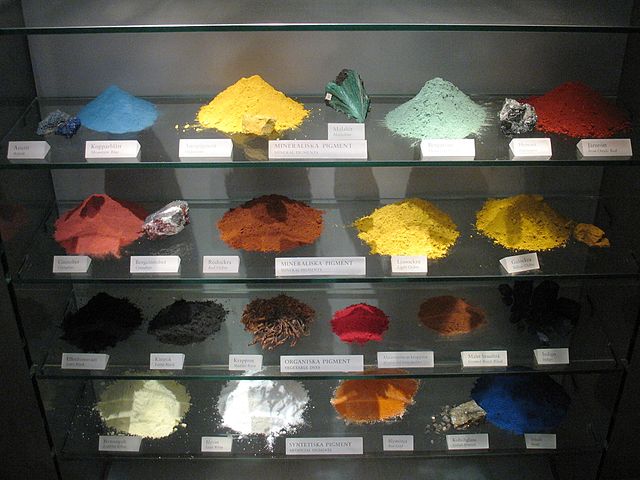White lead is the basic lead carbonate 2PbCO3·Pb(OH)2. It is a complex salt, containing both carbonate and hydroxide ions. White lead occurs naturally as a mineral, in which context it is known as hydrocerussite, a hydrate of cerussite. It was formerly used as an ingredient for lead paint and a cosmetic called Venetian ceruse, because of its opacity and the satiny smooth mixture it made with dryable oils. However, it tended to cause lead poisoning, and its use has been banned in most countries.
Color pigments used on the warship Vasa, with white lead second from left, bottom shelf
Can of Dutch Boy Paint, consisting of basic lead carbonate and linseed oil
Cerussite (also known as lead carbonate or white lead ore) is a mineral consisting of lead carbonate (PbCO3), and is an important ore of lead. The name is from the Latin cerussa, white lead. Cerussa nativa was mentioned by Conrad Gessner in 1565, and in 1832 F. S. Beudant applied the name céruse to the mineral, whilst the present form, cerussite, is due to W. Haidinger (1845). Miners' names in early use were lead-spar and white-lead-ore.
Cerussite
Crystals of cerussite, a secondary lead ore
At 890 carats, the Light of the Desert (located at Toronto's Royal Ontario Museum) is the world's largest faceted cerussite.
Colorless cerussite crystal that has been included by wisps of light green malachite






